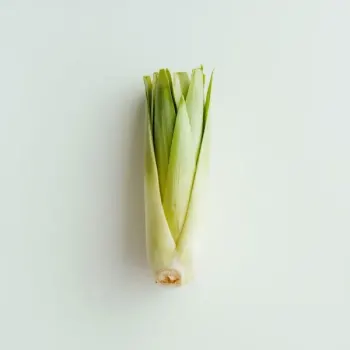Lemongrass and lime juice are cooking ingredients with distinct flavors; lemongrass offers a lemony aroma without acidity, while lime juice adds a sharp, tangy flavor to dishes. They are used differently in recipes and are not direct substitutes for one another.

Lemongrass is a tropical plant used in cooking and herbal medicine. It's known for its lemony scent and is a staple in many Asian cuisines, imparting a fresh, citrusy, and slightly herbal flavor to dishes without the acidity of actual citrus fruits.

Lime juice, derived from the lime fruit, is a sour, tart liquid used extensively in various cuisines worldwide. It adds a bright, acidic punch to dishes and drinks, often used to balance flavors and enhance the overall taste profile.
Lemongrass and Lime Juice differ significantly in taste, texture, and source. Lemongrass provides a fragrant, lemon-like aroma with a mild taste, while lime juice offers a sharp, tangy flavor. Texturally, lemongrass is a fibrous stalk, whereas lime juice is a liquid. Lemongrass is typically used in solid form or infused into liquids, while lime juice is used as a liquid ingredient.

Your ultimate Recipe Box, Meal Planner, and Cooking Class all in one
Best used in Thai and Vietnamese soups like Tom Yum and Pho. It imparts a subtle citrus scent and a hint of mint. For a balanced flavor, add bruised stalks early in the cooking process. Ideal for adding a tangy kick to Mexican Pozole or Caribbean stews. Use lime juice to finish the dish or as a garnish to maintain its bright flavor.
Great for marinating meats for Indonesian Satay or Thai grilled dishes. It tenderizes and adds a complex citrusy note. Finely mince or grind the lemongrass for best results. Perfect for ceviche or Cuban Mojo marinades. The acidity of lime juice can 'cook' raw fish or tenderize meats. Use it sparingly to prevent overpowering the dish.
Creates refreshing teas or infusions, often paired with ginger or mint. It adds a lemony aroma without the sourness, making it suitable for sweet and savory drinks. Essential for cocktails like Margaritas or non-alcoholic limeades. It provides a tartness that's key to the beverage's flavor profile. Always use fresh lime juice for the best taste.
Lemongrass and Lime Juice both contain essential vitamins and minerals beneficial for health. Lime Juice is high in Vitamin C, while Lemongrass has traces of Vitamin A.
| Nutrient | Lemongrass ( Per 100g ) | Lime Juice ( Per 100g ) |
|---|---|---|
| Fat | 0.5g | 0.1g |
| Protein | 1.8g | 0.4g |
| Calories | 99 | 25 |
| Vitamin A | 6% | |
| Vitamin C | 2.6mg | 28.1mg |
| Carbohydrates | 25g | 8.4g |
Lemongrass can impart a citrus-like flavor but doesn't provide the acidity of lime juice, so it is not a direct substitute.
Lime juice can sometimes be used for its sourness in recipes, but it won't replicate the unique fragrance of lemongrass.
Trim the ends, remove the tough outer layers, and use only the tender inner stalk. It can be minced, pounded, or sliced depending on the recipe.
Yes, lime juice has a strong tart and acidic taste, which can be used to enhance or balance other flavors in a dish.
Dried lemongrass can be used, but it's less potent than fresh. It should be rehydrated in warm water before use.